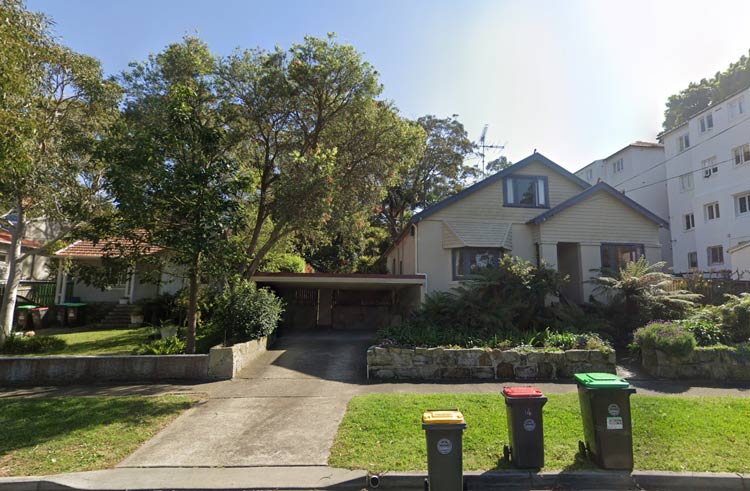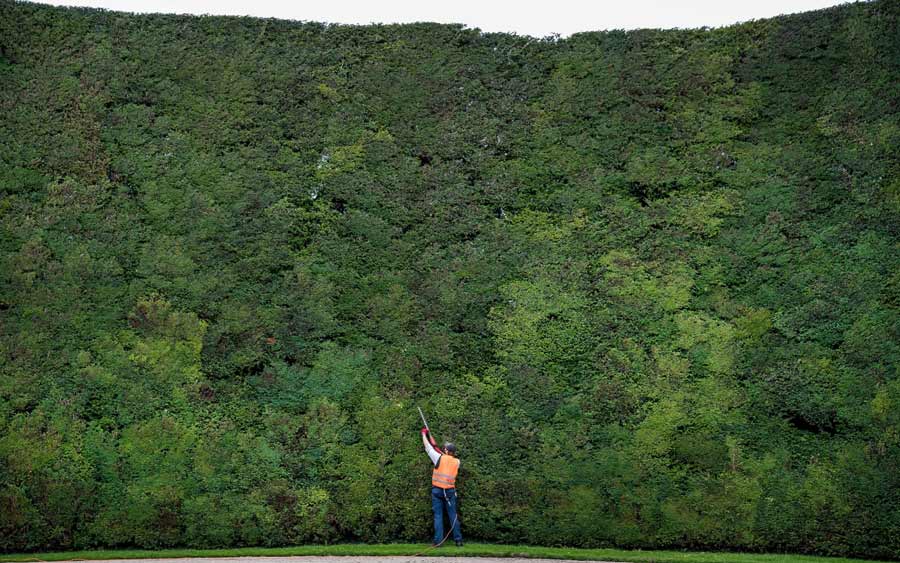Can I cut a neighbor’s tree overhanging my yard?
Yes, you can, but under certain conditions. There are two rules we are dealing with here.
- Do I need a permit from the council to trim a tree?
- Do I need permission from my neighbor to trim their tree?
Let’s have a look at both.

What we cover
ToggleThe law
Everything revolving around neighbour’s trees is guided and controlled by the Tree Disputes Between Neighbours Act 2006.
As a result, in most parts of NSW, you have to obtain consent from a neighbour before you can cut their overhanging trees. This is for trees that do not require a permit from the council.
For trees that require a permit from the council, you will also need your neighbour to sign a permit application form for the council to approve any tree works.
However, in some councils, if the tree is not protected by the council, you are free to cut or trim overhanging leaves, roots or branches extending into your boundary provided you do not damage the rest of the tree.
As a result, you should check with your council to find out.
Overhanging trees - Owners responsibility
It is the responsibility of a tree owner to prune any overhanging branches that are breaching a neighbour’s boundary.
This should apply whenever the tree owner is notified that the overhanging branches are posing a danger to neighbour’s animals, buildings or other property.
In relation to this, a person who owns poisonous vegetation that overhangs into a neighbour’s premises and poisons any animal will also be held liable.
Find more details about tree disputes between neighbours regulation 2019 https://www.legislation.nsw.gov.au/#/view/regulation/2019/397
Who pays?
When pruning of overhanging trees is done, the pruner bears the cost of the work. Whether there is a tree removal permit required or not, all the costs are paid by the pruner.
In such cases, it can be the owner or the neighbor.
Can I throw branches back over the fence?
Yes, you can return the waste from the tree to the owner since they are their property. However, before doing so, you have to ask for permission to avoid trespassing.
Hedge height laws in NSW
Hedge height laws are provided by the Trees Act. The act allows for Part 2A order. This means occupiers or landowners to apply through Land and Environment Court for a restrain, remedy or prevention order to help avoid obstruction of sunlight to dwellings’ windows or any dwelling view, in case the obstruction is caused by trees from neighboring land.
The law further requires tree:
- Be in a group of either two or more.
- Must be planted in a manner to create a hedge.
- It should rise to at least 2.5 meters in height from the ground level.
However, it is important to understand that when the obstruction is caused by just one tree, the Part 2A order does not apply.
Part 2A does not also apply for trees owned by the council, or on crown land.


For one to exercise the Part 2A order, you have to give a notice of not less than 21 days to the landowner where the tree is. The notice should also be given to relevant authorities and other people who may be affected.
Part 2A allows for the following actions.
- Pruning of trees to and keeping them at a specific height, the shape of width.
- Removal of trees to replace them with others of a different species.
- Authorizing entry into another land to execute the orders.
- Payment of costs of work
Before a court offers an order in relation to hedge height, they will make an assessment and get satisfied by the following.
- That reasonable effort has been made by the applicant to try and reach an agreement with the landowner where the tree is located.
- The applicant has gone ahead to provide necessary and proper notice to the owner. Unless the court has waived the notice.
- That, the trees in question, are severely causing sunlight obstruction to the applicant’s dwelling window or causing obstruction of a view from the dwelling of the applicant.
- The obstruction situation should be so severe or should be in nature in which the applicant’s need for a remedy outweighs any undesirability to interfere with the tree.
What is the Right of abatement?
It is also referred to as the right to removal or reduction of a nuisance. It is a common law that gives you the right to cut or trim any roots, branches, or leaves that overhang your boundary as long as the tree is not protected.
However, you should not cause any unnecessary damage to the tree or kill it in the process.
How much does tree pruning cost?
The average cost of tree pruning in New South Wales is $52.50/hr for hiring a professional.
Many arborists also like to charge per project not by the hour. The average cost of tree pruning in NSW is $289.
However, the cost of pruning trees changes based on tree size, accessibility, and additional services required.
For more details on tree trimming costs in NSW, please see our cost guide here or visit our homepage for more articles on trimming and tree care.
Roots from neighbour’s trees in NSW
Roots from your neighbor’s trees are treated the same way as overhanging branches. As a result, in cases where you have roots from your neighbor’s trees damaging your driveway you have the right to remove them according to the right of abatement.
You can also use Part 2 (section 9) of the Trees (Disputes Between Neighbours) Act 2006 to obtain orders from the court pertaining to damage to property.
Such an order will also require the removal of offending roots, and replacement or repair of cracked paths, walls, and sewer pipes damaged by the roots.
Such orders can also require the payment for the installation of root control barriers.
FAQ's
Yes. However, this is required when the trees are becoming a nuisance to your home either by posing a danger through overhanging branches, they are damaged, problems from roots or infestation and the neighbor is not cooperating.
You can report to the council or through the Land and Environment Court in cases where the neighbor is not responding to your request.
Yes. The law allows you to request a neighbor to cut trees when they are becoming a nuisance to your private property.
This is applicable where the trees have overgrown into your property, they are posing a danger to your property, infested trees or posing a danger to power lines.
According to legal answers for New South Wales, a neighbor’s trees can grow as high as possible as long as they are maintaining the hedge height guidelines.
Hedge laws require trees next to a neighbor to be above 2.5 meters in cases where they are more than two. This is to prevent obstruction of light in the dwelling as well as obstruction of view from dwellings.
When your neighbour’s tree is too big you have several actions to take.
If the tree is not interfering with your private property you can do nothing.
However, if the tree is too big that it has branches that are overhanging into your property or posing danger, you can discuss with your neighbour to have him prune the tree.
In cases, where the neighbour is not willing to prune and the tree is protected, you can obtain a Part 2A order of the Tree (Dispute between Neighbours) Act 2006 that will allow you to prune.
In cases where the tree is so big and is causing danger or damage of any kind to your property you also have a chance to report the matter to your council. The matter will be assessed and further directives given.
There are no clear guidelines on how far your neighbor’s plant should be from your house. But trees that grow large and are too close to your home will need removal. The only available guidelines are on hedge height to control obstruction. Follow this link for more information on that.
https://legalanswers.sl.nsw.gov.au/neighbours-and-law/trees-and-plants
Yes. Under the right conditions, you can obtain an order to have your neighbour cut his hedge.
The order is Part 2A order which is from the Trees (Disputes Between Neighbours) Act 2006. However, the order is effective under various conditions.
It is effective if the neighbour’s hedges are becoming a nuisance to your property or posing any risks to your private residence.
Any court will do a good assessment of the conditions and consider various factors before providing orders to cut or remedy a hedge.
Yes. Under certain conditions.
Under normal conditions, the council will not force your neighbor to tidy their garden. However, in case a complaint is filed where the garden is becoming a nuisance to other neighboring people or harboring dangerous animals or insects then they can be forced to tidy it.












